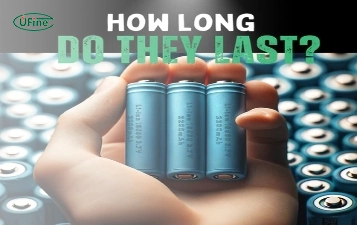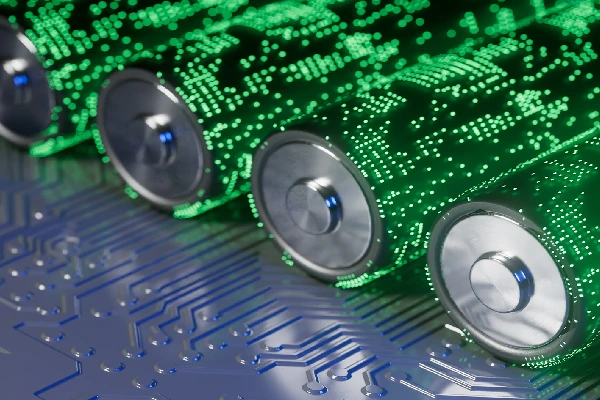Deep cycle lithium batteries are revolutionizing the energy storage landscape with their long lifespan and ample capacity. In this article, we explore the life, voltage, capacity, and charging considerations of deep cycle lithium batteries.
Part 1. What is the deep cycle lithium battery?
The deep cycle lithium battery is a type of battery that is specifically designed to provide sustained power over a prolonged period. It is built to handle repeated deep discharges and recharges without losing efficiency or capacity.
Unlike the sprinter batteries that give a quick burst of energy and then poop out these lithium deep cycle batteries can go the distance, providing reliable juice for your devices without fizzling out too soon.
Deep cycle lithium batteries are known for their high energy density, longer lifespan, and ability to deliver a consistent and reliable power output.
They are commonly used in applications that require continuous power, such as renewable energy systems, electric vehicles, marine applications, and off-grid setups.
Part 2. Deep cycle lithium battery voltage
For deep cycle lithium cells, usually have a nominal voltage of 3.2 volts cell, which can vary slightly depending on the specific chemistry and design.
Deep cycle lithium battery voltage can vary depending on the specific model and configuration. However, the most common voltage for deep cycle lithium batteries is 12 volts, similar to traditional lead-acid deep cycle batteries.
Part 3. Deep cycle lithium battery capacity
The deep cycle lithium battery capacity refers to the amount of energy it can store and deliver. It is typically measured in ampere-hours (Ah) or milliampere-hours (mAh). The capacity of deep cycle lithium batteries can vary depending on the specific model and configuration.
The deep cycle lithium battery capacity directly affects the device’s runtime. A higher capacity battery can store more energy and deliver power for a more extended period before needing to be recharged.
Part 4. deep cycle lithium battery life
The deep cycle lithium battery life can vary depending on several factors, including the quality of the battery, how it’s used, and how well it’s maintained.
However, deep cycle lithium batteries are generally known for their long lifespan compared to other types of batteries, such as lead-acid.
Here are some factors that can affect the life of a deep cycle lithium battery:
1. Cycle Life
Deep cycle lithium batteries typically have a high cycle life, meaning they can undergo many charge and discharge cycles without significant degradation. Many high-quality lithium batteries can last thousands of cycles, often surpassing the lifespan of lead-acid batteries.
2. Depth of Discharge
The depth to which a lithium battery is discharged during each cycle can impact its lifespan. Generally, shallow discharges (i.e., not draining the battery completely) can prolong the battery’s life compared to deep discharges.
3. Temperature
Operating the battery at extreme temperatures, especially high temperatures, can accelerate degradation and reduce lifespan. Maintaining the battery within its recommended temperature range is essential for optimal performance and longevity.
4. Charging Practices
Proper charging practices, such as using a compatible charger and avoiding overcharging or undercharging, can help extend the life of a lithium battery. Many lithium batteries have built-in protection circuits to prevent overcharging and over-discharging.
5. Maintenance
Regular maintenance, such as keeping the battery clean and properly ventilated, can contribute to extending its lifespan. It’s also essential to follow manufacturer recommendations for storage and maintenance.
Part 5. deep cycle lithium battery application
Deep cycle lithium batteries find applications in various industries and scenarios where reliable, long-lasting power is essential.
Here are some common applications:
- Off-Grid Solar Systems
- Recreational Vehicles (RVs) and Marine
- Backup Power
- Electric Vehicles (EVs)
- Portable Power
- Renewable Energy Integration
- Grid Stabilization
- Medical Devices
- Telecommunications
- Unmanned Aerial Vehicles (UAVs) and Drones
Part 6. How to charge deep cycle lithium battery?
Properly charging a deep cycle lithium battery is crucial to ensure its longevity and performance.
Here’s a step-by-step guide:
Step 1. Choose the Right Charger
Use a charger specifically designed for lithium batteries and compatible with the voltage and capacity of your deep cycle lithium battery. Using the wrong charger can damage the battery or pose safety risks.
Step 2. Prepare the Charging Area
Charge the deep cycle lithium battery life in a well-ventilated area away from flammable materials and direct sunlight. Ensure the charging surface is clean, dry, and stable.
Step 3. Check Battery Voltage
Before charging, check the lithium battery’s voltage using a multimeter to ensure it’s not deeply discharged or overcharged. Ideally, the battery voltage should be within the manufacturer’s recommended range.
Step 4. Connect the Charger
Connect the charger’s positive (+) and negative (-) terminals to the corresponding terminals on the deep cycle lithium battery. Ensure the connections are secure and tight to prevent arcing or overheating.
Step 5. Set Charging Parameters
Set the charging parameters on the charger according to the specifications provided by the battery manufacturer. This includes the charging voltage, current, and charging mode (constant current, constant voltage, or both).
Step 6. Initiate Charging
Start charging by turning on the charger or activating the charging mode. The charger should begin supplying current to the battery according to the selected charging parameters.
Step 7. Monitor Charging Progress
Periodically monitor the charging process to ensure everything is proceeding as expected. Check the charger and battery for any signs of overheating, unusual noises, or other abnormalities.
Step 8. Charge Completion
When the battery reaches its fully charged state, it should automatically switch to a maintenance or float charge mode to prevent overcharging. Some chargers may also indicate completion through LED indicators or audible alerts.
Step 9. Disconnect Charger
Once the charging process is complete, disconnect the charger from the battery terminals. Ensure to follow the proper sequence and disconnect the negative terminal first, followed by the positive terminal, to prevent accidental short circuits.
Step 10. Storage or Use
Depending on your immediate needs, you can either store the fully charged battery for later use or connect it to your device or system for immediate use.
Part 7. 10 tips Deep cycle lithium battery maintenance
Properly maintaining your deep cycle lithium battery can help prolong its lifespan and ensure optimal performance. Here are some maintenance tips:
- Regular Inspection: Periodically inspect the battery for any signs of physical damage, leaks, or corrosion on the terminals. Address any issues promptly to prevent further damage.
- Keep It Clean: Regularly clean the deep cycle lithium battery terminals and surrounding areas to remove dirt, grime, and corrosion buildup. Use a mixture of water and baking soda to clean terminals if corrosion is present, then rinse thoroughly with clean water.
- Avoid Over-Discharging: Deep cycle lithium batteries perform best when they are not deeply discharged. Avoid letting the battery voltage drop below a certain threshold (often specified by the manufacturer) to prevent damage and prolong its lifespan.
- Proper Charging: Charge the battery using a compatible charger designed for lithium batteries and follow the manufacturer’s recommended charging parameters.
- Temperature Management: Ensure the battery is operated and stored within the recommended temperature range specified by the manufacturer.
- Storage Considerations: If storing the deep cycle lithium battery for an extended period, partially charge it to around 50% of its capacity and store it in a cool, dry place. Check the battery periodically and recharge if the voltage drops below a safe level.
- Use Properly Sized Cables: Ensure that the cables used to connect the deep cycle lithium battery to your devices or charging equipment are of the appropriate size and gauge to handle the current without overheating or voltage drop.
- Avoid Mixing Battery Chemistries: Do not mix deep cycle lithium batteries with other types of batteries (e.g., lead-acid) in the same system, as this can lead to imbalance and potential damage.
- Follow Manufacturer Guidelines: Always refer to the manufacturer’s instructions and guidelines for specific maintenance recommendations and safety precautions for your deep cycle lithium battery.
- Professional Inspection: If you notice any significant changes in the battery’s performance or behavior, such as reduced capacity or unusual heating during charging, consider having the battery inspected by a qualified technician to identify and address any underlying issues.
Related Tags:
More Articles

How Long do Lithium Batteries Last?
How long do lithium batteries last? we will explore the factors that influence the lifespan of lithium batteries and provide insights into their longevity.
How to Choose the Best LiFePO4 Battery?
Choose LiFePO4 batteries for superior performance, safety, and versatility in EVs, UPS, and backup power. This guide helps you make informed decisions.
Get 12v Lithium Car Battery As a Power Source for the Ride
Make the right choice for your vehicle's battery needs by installing a 12 volt lithium car battery. You will enjoy maintenance-free longevity with this change.
Everything About A Small Lithium Ion Battery
Discover the features, uses & future potential of a small lithium ion battery. A compact and tiny powerhouse ideal for smartphones, wearables, drones & more.
Why Should You Choose Lithium Ion Marine Battery?
Upgrade your boat's power with a Lithium ion marine battery, featuring lighter, longer life, faster-charging abilities. Let's choose the best marine battery.






